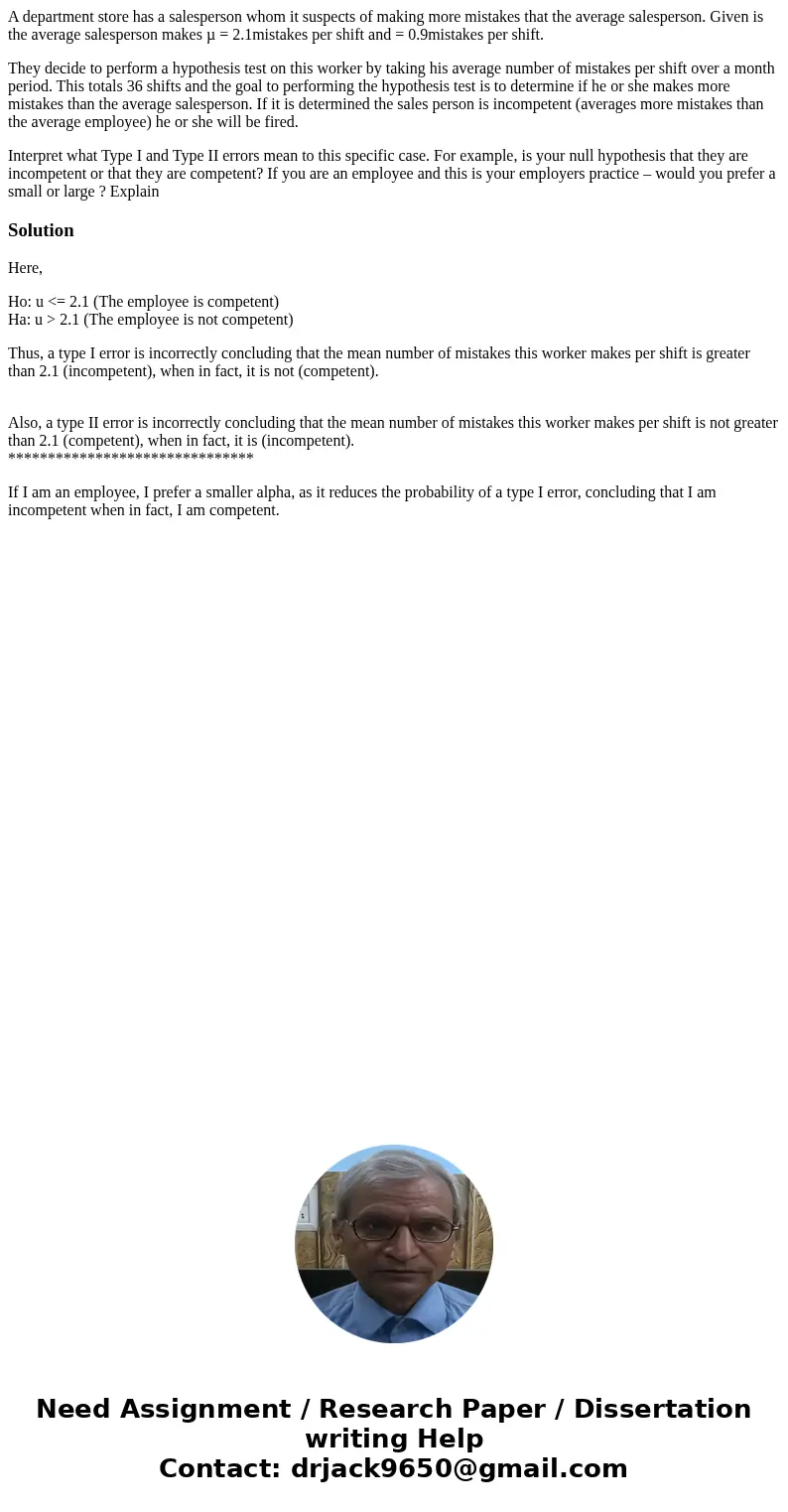A department store has a salesperson whom it suspects of mak
A department store has a salesperson whom it suspects of making more mistakes that the average salesperson. Given is the average salesperson makes µ = 2.1mistakes per shift and = 0.9mistakes per shift.
They decide to perform a hypothesis test on this worker by taking his average number of mistakes per shift over a month period. This totals 36 shifts and the goal to performing the hypothesis test is to determine if he or she makes more mistakes than the average salesperson. If it is determined the sales person is incompetent (averages more mistakes than the average employee) he or she will be fired.
Interpret what Type I and Type II errors mean to this specific case. For example, is your null hypothesis that they are incompetent or that they are competent? If you are an employee and this is your employers practice – would you prefer a small or large ? Explain
Solution
Here,
Ho: u <= 2.1 (The employee is competent)
Ha: u > 2.1 (The employee is not competent)
Thus, a type I error is incorrectly concluding that the mean number of mistakes this worker makes per shift is greater than 2.1 (incompetent), when in fact, it is not (competent).
Also, a type II error is incorrectly concluding that the mean number of mistakes this worker makes per shift is not greater than 2.1 (competent), when in fact, it is (incompetent).
*******************************
If I am an employee, I prefer a smaller alpha, as it reduces the probability of a type I error, concluding that I am incompetent when in fact, I am competent.

 Homework Sourse
Homework Sourse